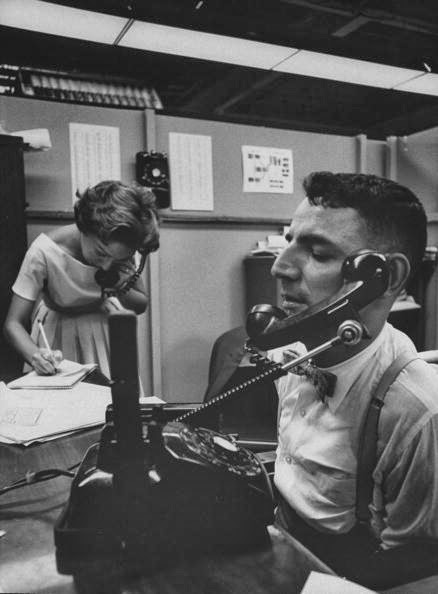The 1950s was a decade marked not only by phenomenal advances in science, but by an enormous amount of public interest in scientific and technological progress. This was the Space Age, when writers of science fiction looked forward to a boundless future in which human beings would transcend the limitations of earthly existence. It’s entirely fitting, then, that one of the era’s greatest inventors was a man who used machines and computers to overcome the debilitating movement disorder known as cerebral palsy.
Children born with cerebral palsy are often uncoordinated, with stiff or weak muscles that make it difficult to move normally. For Emik Avakian, born in what is now Iran in 1923, the ailment was particularly severe, leaving him almost completely paralyzed at an early age. While cerebral palsy often comes with serious intellectual disabilities, Avakian’s brain was unaffected by it; in fact, as he matured he developed a brilliant intellect, though speech impediments hindered his ability to communicate.
Avakian’s family moved to New York in 1935, and he moved on his own to Chicago in 1944, determined to pursue higher education. Unable to write, he hired typists to transcribe his thoughts so that his coursework could be completed. He was able to graduate magna cum laude with degrees in physics and mathematics from Eureka University in Illinois, then went on to obtain an M.A. from Columbia University. Demonstrating a passion for electrical engineering, he became an electronics consultant for IBM and immersed himself in the world of machines and computers.
Avakian’s new position brought new challenges. As an employee at a large company, he would be expected to write out documents and answer the telephone at a moment’s notice, without the use of his hands. For the telephone, he developed a hands-free device that used a metal rod to hold the receiver in midair. The typewriter was trickier, but Avakian had an ingenious solution: a breath-operated machine that would convert a signal from four microphones into keystrokes. With this device, essentially a low-level computer, four-digit codes were interpreted as individual keys and sent to an IBM electric typewriter which typed them out. It was slow, but reliable, and saved the expense of a dedicated transcriptionist. Avakian estimated that the machine could be sold for $550, far cheaper than the brigades of transcriptionists he had hired to get him through college. This pioneering device later earned him a commendation from President John F. Kennedy for “most outstanding contribution to the employment of the handicapped.”
Avakian was fascinated with the issue of communication. He compared the human body to a huge intercom system, with the brain as the central transmitter; cerebral palsy, in his eyes, was like a breakdown in the system that kept the body and brain from communicating. While many of his inventions were aimed at improving the prospects of people with disabilities[LH4] , some of his most ingenious creations were inspired by a fascination with information technology; perhaps the most impressive in hindsight was a machine to store and display millions of microfilm documents on command, much like a modern computer server or search engine. He never called himself a computer scientist, but the connection between his electronic machines and the world of computing is quite apparent.
It wasn’t just electronic communication that interested him, though. Needing help from others to assemble his devices, to get around and even to eat, Avakian appreciated the importance of interpersonal relationships to his working life. Contemporaries remembered him as a kind, friendly man who loved to tell jokes, share ideas and compliment others in office memos. Though his own speech was impaired, and his machines could only write down his thoughts slowly, his brain was constantly active and looking for ways to express itself. The title of an article about him in a May, 1962 issue of Life magazine describes his career perfectly: It was a “Proud Win for a Man with a Will.”
True to the spirit of his age, Avakian proved that the brain can compensate for the body’s defects through the medium of technology. Even as a young man, Avakian was an inspiration to many people with cerebral palsy and their families. One noteworthy instance of this is shown in a letter that was sent to the editors of Life shortly after they ran the above-mentioned article:
“…Emik Avakian has accomplished more things in his life with a handicap than many persons can do without one. Being a cerebral palsy victim myself, I can understand the trials and tribulations that Mr. Avakian went through to be able to do the great and wonderful work that he is now doing.”
Next Post: Bette Nesmith Graham, the single mother who invented a cure for typos by applying paint to paper.














